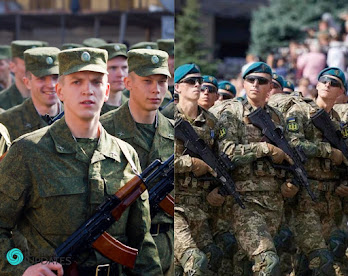The report named" Climate Damage Caused by the Russia- Ukraine Conflict" was released in June this time by the" War Greenhouse Gas Accounting Initiative". The report was funded by the European Climate Foundation and the Ukraine Initiative, and was presented by a exploration platoon led by Dutch expert De Klerk.
Equal To Belgium's Public Carbon Emissions
The report refocused out that in the 12 months before the Russia- Ukraine conflict, hothouse gas emissions were as high as 120 million tons, original to the total carbon emissions of small and medium- sized countries similar as Belgium in a time. De Klerk said" We did not anticipate the carbon emissions caused by war to be so large. Not only the war itself caused emissions, but also the unborn reconstruction of destroyed structure will also have an impact." He also mentioned that carbon emissions from war conflicts and military munitions are frequently ignored.
The report mentioned that since the outbreak of the Russia- Ukraine conflict in February last time, the reconstruction of structures, roads and manufactories damaged in the fighting reckoned for 42 of the total carbon emissions of the war. De Klerk refocused out that reconditioning reckoned for the most carbon emissions due to the need to use" carbon- ferocious" concrete and sword. Among them, the reconstruction of civil structure generated nearly doubly as important hothouse gas as the reconstruction of transport and structure.
The second largest carbon footmark of the Russia- Ukraine conflict comes from factual fighting, substantially due to the consumption of fossil energies. De Klerk refocused out that the lack of translucency between the colors of the opposing sides makes it delicate to gain accurate data on reactionary energy use, and experimenters can only use deputy data. Of the nearly 22 million tons of carbon dioxide produced by factual combat, nearly 14 percent came from the product of munitions and military outfit, the report said. And because the Russia- Ukraine conflict is largely base combat, the main source of emissions is diesel rather than spurt energy, which was the main source of carbon dioxide emissions during the Iraq war.
In addition to the war, the report also counts hothouse gas emissions outside Ukraine, similar as gas leaks from the damaged Nord Stream channel, transnational flight diversions and exile overflows. The report also refocused out that due to the outbreak of the conflict, Ukraine’s domestic profitable conditioning have declined, but the carbon emissions caused by these profitable conditioning have been transferred to other countries. The reduction in carbon emissions European countries due to the reduction of Russia’s natural gas transmission and electricity consumption has neutralize each other with the use of oil painting, coal and thawed natural gas( LNG).
Carbon Emissions From Military Conditioning Are Fluently Overlooked
Experts say the use of drones in warfare can help reduce carbon emissions." One of the biggest emissions- reducing technologies is the use of drones," said a elderly U.S. defense functionary." The energy performance improves dramatically when there are no people on board."
 |
| The cost of war. |
" The environmental cost of the conflict between Russia and Ukraine is a disaster in terms of carbon emissions," said NATO Deputy Assistant Secretary- General for Emerging Security Challenges Apatule. Ukraine's Ministry of Environmental Protection said it was important to start conversations on the climate impact of the war." Unfortunately, the impact of the Russia- Ukraine conflict isn't and won't be reflected in the periodic report and review of hothouse gas emissions prepared by the UNFCCC secretariat."
Numerous countries publish unreliable data because military conditioning aren't bound by transnational climate agreements or carbon- reduction agreements. Opaque data on military exertion, immunity for carbon emissions generated by colors overseas and occasionally double counting when homes are enthralled by different powers have muddied the carbon numbers, de Klerk said.
Between 2001 and 2018, war- related conditioning conducted by the U.S. service in overseas locales similar as Pakistan, Afghanistan, Iraq and Syria redounded in 440 million tons of carbon emissions, according to Brown University's Cost of War Project. During the 1990- 1991 Gulf War, Iraq set fire to hundreds of oil painting wells during its retreat from Kuwait, releasing some 133 million tons of emissions, according the International Institute for Applied Systems Analysis.
How War Affects the Environment
Increase Carbon Emissions
Colorful munitions similar as tanks, ordnance, and copters used in wars release large quantities of soot, methane, and carbon dioxide, exacerbating climate warming. The carbon emissions of the Russia- Ukraine conflict in one time are original to the carbon emissions of the entire country of Belgium.
 |
| Effects of war. |
Produce Pollution
Wars beget air, soil, and water pollution. wide pollution not only threatens original wildlife, but also increases the threat of cancer, respiratory conditions, and increases the threat of unseasonable births in women and suppressed growth in children.
Damaged Food
Ukraine is one of the world's most important exporters of sludge, wheat, barley and sunflower oil painting, while landmines, dum dums or military vehicle energy and dangerous substances can chemically contaminate the soil. dangerous substances could be absorbed by shops, turning crops into venoms and causing long- term damage to Ukrainian agrarian productivity.




0 Comments